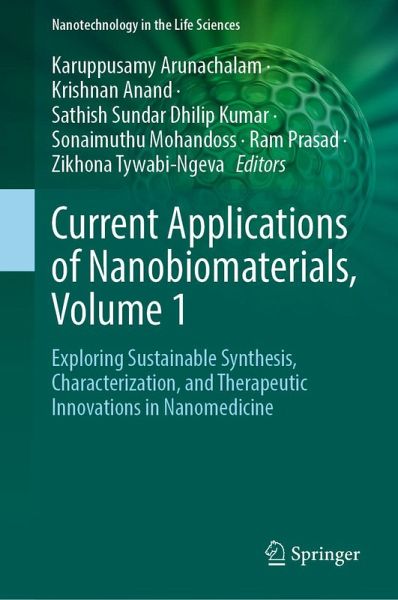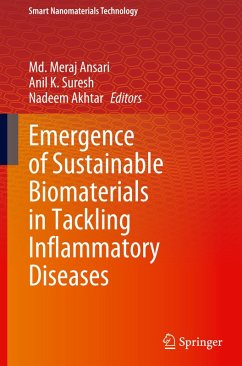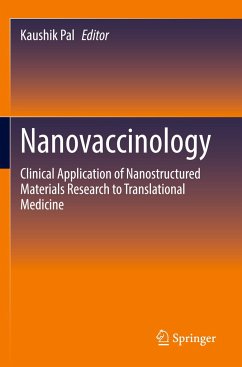
Current Applications of Nanobiomaterials, Volume 1
Exploring Sustainable Synthesis, Characterization, and Therapeutic Innovations in Nanomedicine
Herausgegeben: Arunachalam, Karuppusamy; Anand, Krishnan; Kumar, Sathish Sundar Dhilip; Mohandoss, Sonaimuthu; Prasad, Ram; Tywabi-Ngeva, Zikhona

PAYBACK Punkte
104 °P sammeln!
Biomaterials play a vital role in medicine today, including restoring function and facilitating diagnosis and disease prevention. Biomaterial-based products consist of either natural or synthetic materials. Biomaterials derived from natural products can consist of materials such as proteins, polysaccharides, lipids, glycoproteins, lipoproteins, cellular matrix, and its components. These products may be used as alternatives to animal-derived and synthetic chemical products to develop new therapeutic and diagnostic approaches with greater eco-friendliness and sustainability, according to new res...
Biomaterials play a vital role in medicine today, including restoring function and facilitating diagnosis and disease prevention. Biomaterial-based products consist of either natural or synthetic materials. Biomaterials derived from natural products can consist of materials such as proteins, polysaccharides, lipids, glycoproteins, lipoproteins, cellular matrix, and its components. These products may be used as alternatives to animal-derived and synthetic chemical products to develop new therapeutic and diagnostic approaches with greater eco-friendliness and sustainability, according to new research. They are also biocompatible, biodegradable, renewable, non-toxic, and capable of remodelling.
Recently, scientists have been exploring the potential use of plant-based cellular matrix-based biomaterials for the treatment of various communicable and noncommunicable diseases, a trend that has attracted the attention of global biomedical research. Globally, there has been an increase in the need for more effective treatment and diagnostics as a result of the overwhelming disease burden in society. Current Applications of Nanobiomaterials, Volume 1 and Volume 2 together, outline the most widely used biomaterials derived from non-animal natural resources, such as plants, fungi, algae, and microbes, with a focus on novel therapeutic and diagnostic applications.
Recently, scientists have been exploring the potential use of plant-based cellular matrix-based biomaterials for the treatment of various communicable and noncommunicable diseases, a trend that has attracted the attention of global biomedical research. Globally, there has been an increase in the need for more effective treatment and diagnostics as a result of the overwhelming disease burden in society. Current Applications of Nanobiomaterials, Volume 1 and Volume 2 together, outline the most widely used biomaterials derived from non-animal natural resources, such as plants, fungi, algae, and microbes, with a focus on novel therapeutic and diagnostic applications.












